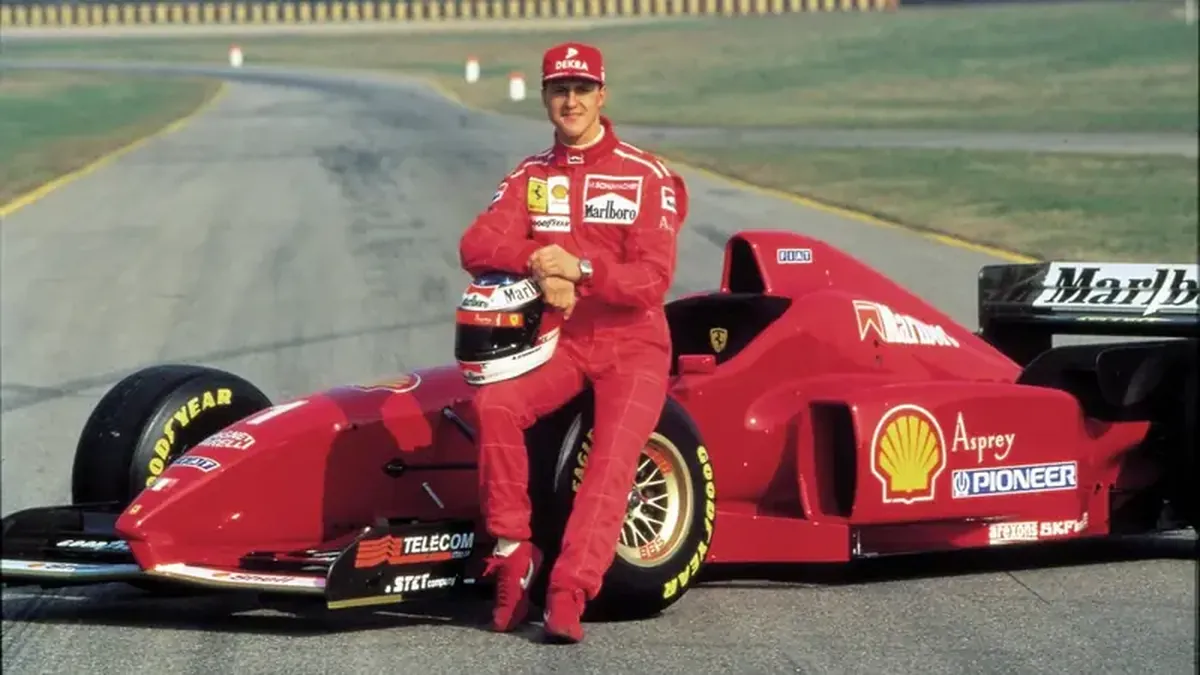
One of the brightest personalities in modern sports has become a popular brand, a symbol of resilience and unwavering success. Thanks to his driving skills and fearlessness behind the wheel, Michael Schumacher won seven world championships and earned nearly a billion dollars. Accustomed to emerging unscathed from troubles on the track (he only broke a leg), he bid farewell to racing in good health. However, the track had its revenge on its champion. The bitter irony of fate was that the most severe injury awaited him on a ski slope just before his birthday. The one who was guarded by angels on the racetrack found himself without their protection beyond its borders. For the past 11 years, this beloved superhero has not been seen by the public. During this time, he has continued to fight for his life, with over 20 million pounds spent on his treatment.
A Common Name
Due to the pilot’s dominance in the vibrant Ferrari car, he was nicknamed the “Red Baron,” while his bright smile and yellow jumpsuit earned him the title of the “Sunshine Boy.” Even those who have never been interested in the world of motorsports have heard of the man who entered the fast lanes at the age of five and competed until the end of his career at 44. For millions of fans, the outstanding German racer, whose name has become synonymous with daring behind the wheel, has always embodied driver courage and the rewarding risks that lead to champagne celebrations and triumphant showers on the top step of the podium.
The fantastic outcome of an 18-year career in Formula 1 for the native of the German town of Hürt in North Rhine-Westphalia included 7 world championship titles, 91 Grand Prix victories, 155 podium finishes, and the highest earnings that surpassed all his competitors and renowned colleagues. At one time, Forbes magazine included Michael Schumacher in its list of dollar billionaires, and even now, with a net worth of $800 million, the former betting leader with elevated odds tops the list of the wealthiest athletes on the planet.
A Career That Started Early
When the city authorities of Kerpen decided to demolish the Mannheim district, where seven-time world champion Michael Schumacher grew up, to expand a coal mine in 2024, only the church, the childhood home of the future racing star, and the karting track where he honed his racing skills remained untouched. The boy, born on January 3, 1969, to the owner of that karting track, engaged in other sports during his childhood (including judo), but he chose his first passion as his life’s work: his racing career began with driving an exclusive kart built by his father Rolf specifically for the restless little boy.
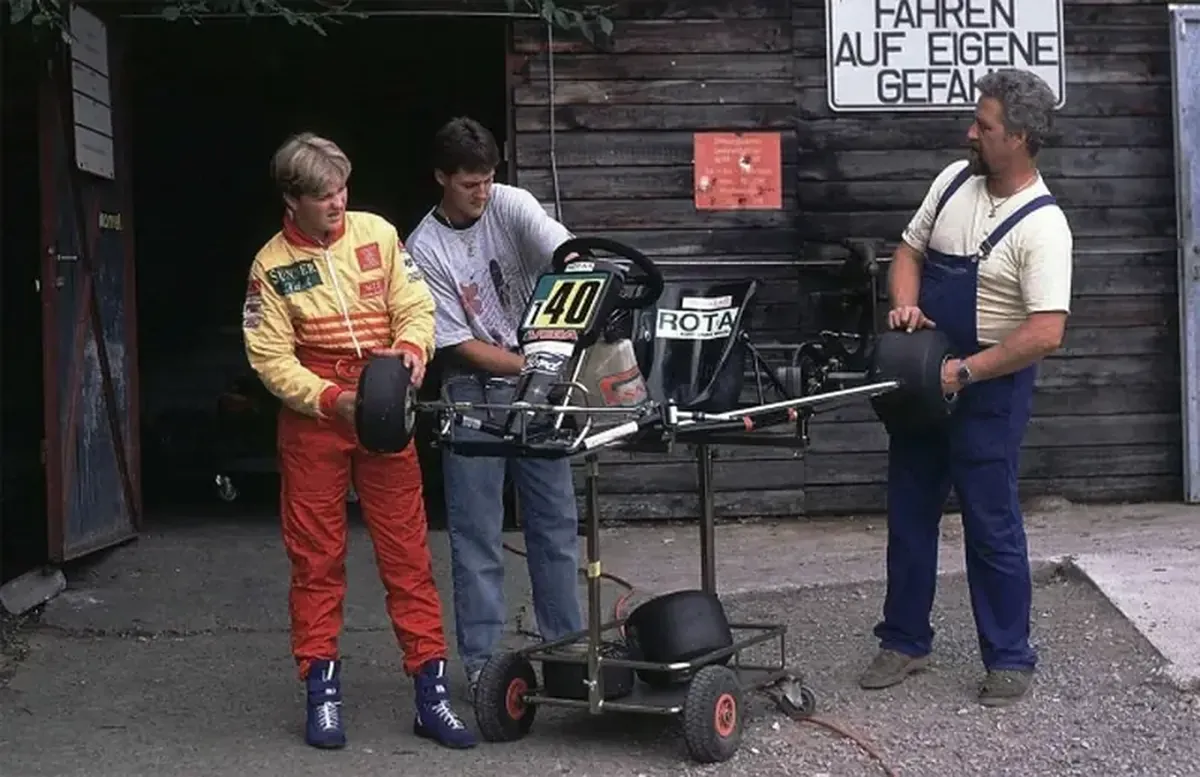
The Schumacher brothers with their father assembling a go-kart
Michael got behind the wheel of his first speed machine at the age of 4, began participating in kart races at 5, and at 14 obtained a Luxembourg racing license, where the age limit was lower, and started competing in official racing events. A year later, the youngest rookie won the German karting championship and then became the European champion when two competitors simultaneously flew off the track on the last lap in the final turn. It seemed as if someone had cleared the path to victory for the chosen one of fate, who won that race and did so many more times throughout his sporting biography.
A Twist of Fate
In 1988, Schumacher traded karting for an open-wheel racing car and became the champion in Formula König, achieving nine wins out of ten possible. The following year, he finished third in the German Formula 3, and a year later, he claimed the championship title there as well. In 1990, the promising German racer took first place at the Macau Grand Prix. Competing in the world sports car racing championship under the Mercedes Junior program, Michael won a stage in Mexico in 1990 and in Japan in 1991, where he also finished second in the Japanese Formula 3000. That was the year when, after ten successful races, Schumacher was invited to compete in the Belgian Grand Prix for Eddie Jordan’s team.
Thanks to the efforts of his personal manager, Michael was able to pilot the Jordan-Ford Formula 1 car instead of the regular driver, who had been arrested for a dispute with a taxi driver. The German racer’s debut on the unfamiliar Silverstone track left a lasting impression on the management of the Benetton-Ford team, for which Schumacher raced in the next race. The contract with the previous team was successfully terminated by court order: this opportunity arose for the young athlete due to an unexpected legal loophole—a grammatical error in the text of the canceled agreement, where the wrong article was used.
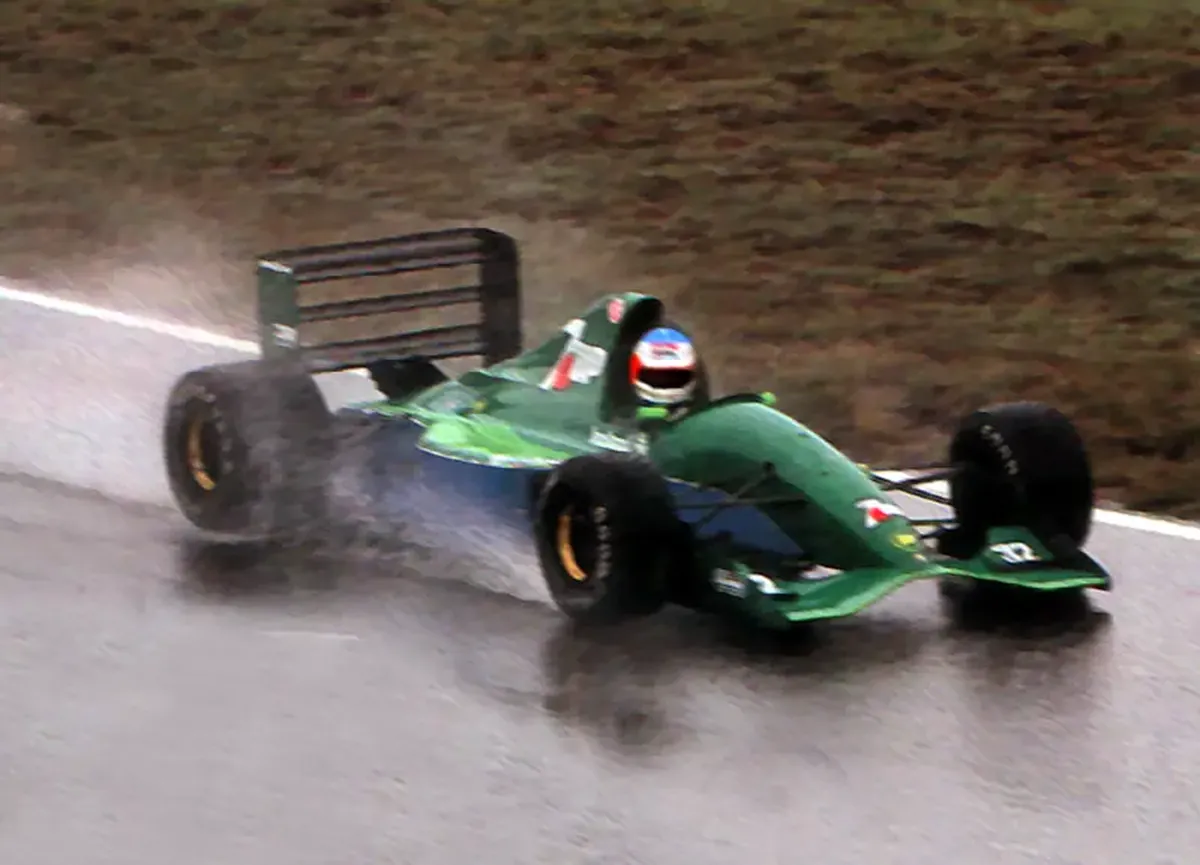
Schumacher tests the Jordan 191 at Silverstone
“Sunshine Boy” vs. “Rain Man”
His first race with Benetton-Ford at the Italian Grand Prix was a success: on the famous Monza track, Schumacher overtook three-time world champion Nelson Piquet. From 1992 onward, Michael consistently held leading positions in the championship, achieving several podium finishes and securing his first victory at the Belgian Grand Prix. He finished the championship in third place, outscoring three-time champion and Formula 1 rival Ayrton Senna. It was during this time that the Formula 1 rookie earned his first sports nickname, “Sunshine Boy,” due to his optimistic bright yellow jumpsuit and dazzling smile.
The competition between the German rookie and the Brazilian star nicknamed “Rain Man” lasted about two years. The “Daredevil Without Brakes,” Michael Schumacher, publicly accused his rival of deliberately slowing down on the track, although the real reason for the Brazilian’s sudden braking during a race was an electronic failure on his McLaren car. After the collision of the racers on the first lap of the French Grand Prix, Senna left the track, and the race stoppage due to rain provided the rivals with an opportunity to discuss their mutual grievances privately, away from the cameras. Symbolically, Schumacher won his first title in 1994 with his Benetton car—the same year that Ayrton Senna tragically died in a crash on the racetrack in Italy on May 1.

Schumacher battles with David Coulthard at the British Grand Prix in 1998
Rules and Competition
At the San Marino Grand Prix, Ayrton Senna attempted to shake off Michael Schumacher, who was tailing him closely, but he flew off the track during the third race of the season. The driver, who had protested against the computer-enhanced dynamic stabilization system, crashed into a concrete wall, while Schumacher remained in the race, as his colleagues suspected, not without possible assistance from technical innovations in the Benetton car. The day before, Schumacher had changes in both his teammate and traction control systems, and the engine (exclusive Ford engine supply for Benetton improved the performance of his car).
All of this increased the competitiveness of the German racer, and in 1994, he won the championship, finishing one point ahead of his main rival from the Williams team, British driver Damon Hill. To prevent computer technologies from giving athletes an advantage on the track, the dynamic stabilization system was banned by the International Automobile Federation, which sought to return control of the car to the driver. Due to non-compliance with technical requirements, Schumacher was stripped of his victory at the Belgian Grand Prix after the finish. Although the team insisted that the stabilization system had not been used during the championship, the FIA later discovered that Schumacher’s car was still equipped with built-in ABS.
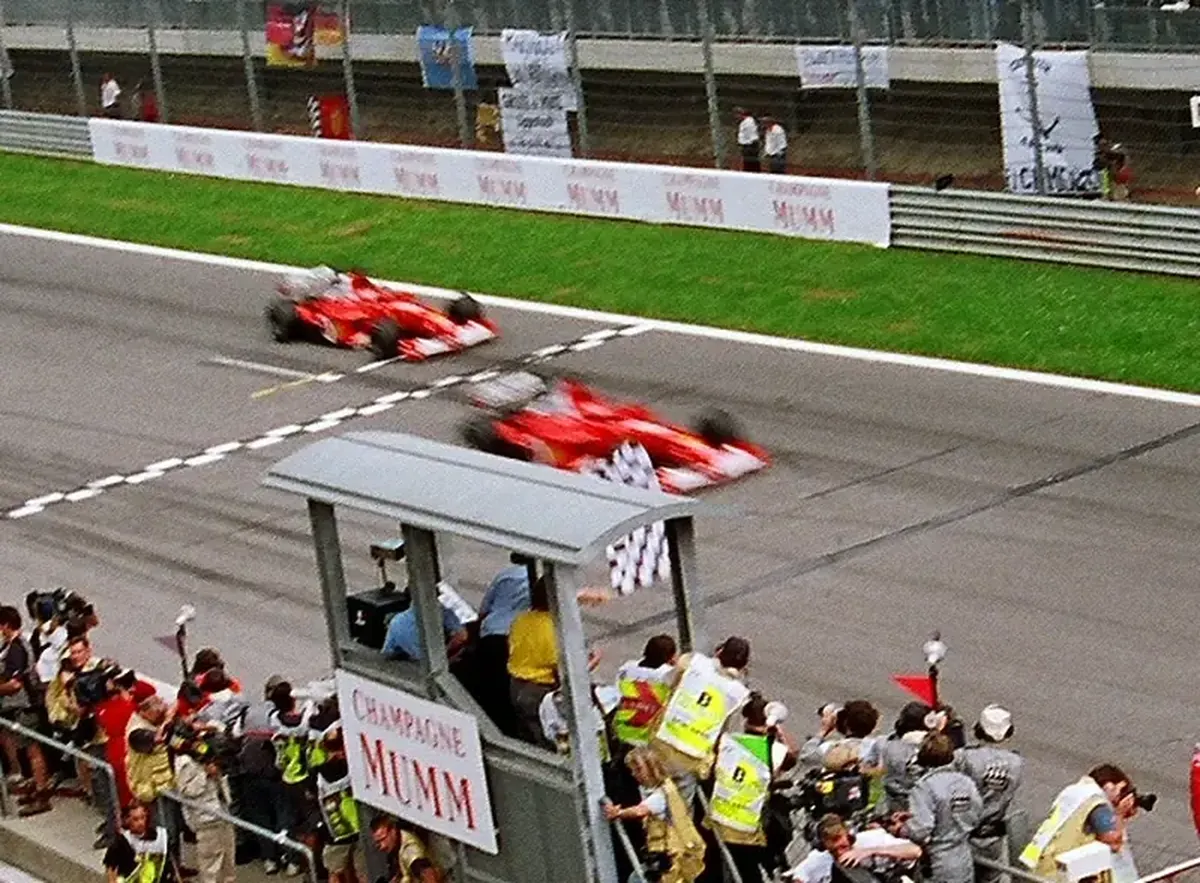
The controversial victory of Michael Schumacher, who overtook Rubens Barrichello at the finish line after a team order at the 2002 Austrian Grand Prix
Signature Style
Schumacher was accused of intentional collisions, stubbornness, and aggressive driving on the edge of a foul. For overtaking Damon Hill during the warming-up lap (a lap that a driver completes at a relatively slow pace to heat the tires to optimal temperature) at the British Grand Prix, Schumacher received a disqualification. His collision with Hill at the Australian Grand Prix resulted in both athletes being knocked out of the race. For ignoring black flags, the German driver was banned from participating in two Grand Prix events—Italy and Portugal. Schumacher had his fair share of “driving excesses.” His mistakes led to crashes, and his car would fly off the track and crash into the barriers.
During an overtaking maneuver in 1995, Schumacher managed to accelerate faster than his opponents, thanks to his unique driving style, which provided him an advantage in turns. The German racer typically approached turns with a steeper trajectory, at maximum speed, braking much later than others. In one interview, Schumacher explained that he allowed the car to find its own line, exploring its effectiveness. However, such experiments did not always end well for him.
Schumacher – A Unique Talent
In 1995, after signing a contract with Ferrari (at that time, the Italian team had not won any championships in the individual standings for 17 years), Schumacher changed the reputation of these sports cars as not the fastest and not very reliable. In his first year with the team, he secured third place in the individual standings and brought three victories to the team: at the Grand Prix of Spain, Belgium, and Italy. Despite disqualification and exclusion from the championship protocol due to a provoked collision in 1997, the soft-spoken German continued to work hard: he completed over 160 laps a day and up to 30,000 kilometers a year.
As the official Formula 1 website noted, “no Ferrari driver had worked as diligently with the entire team, and no one else had been as respected by them as Schumacher, who led the Italians to victory in the Constructors’ Cup of Formula 1 six times in a row.” Colleagues noted his natural talent and racing mindset, which allowed him to make correct decisions under time constraints. Schumacher quickly adapted to changing conditions and calculated his actions in advance, driving the car at the edge of speed. Michael always set an example of perfect physical fitness, which he demonstrated over a long period. Beloved by all, Schumacher often visited the Ferrari factory in Maranello to interact with engineers and designers, bringing them gifts as a token of appreciation.

Champion Ahead of Time
In 1999, Schumacher broke his leg (to be specific, both lower limbs were injured: he suffered a fracture of the tibia and fibula in his right leg and a dislocation in his left knee) in an accident at the British Grand Prix, which prevented him from winning the World Championship for the third time and forced him to miss six races. However, in 2000, the racer secured his third championship title at the Japanese Grand Prix: the Ferrari team had waited 21 years for that triumph. In 2001, Schumacher defended his fourth title, breaking the record for the most Grand Prix wins by a single athlete. In 2002, he dominated the entire championship, finishing on the winners’ podium in every race of the season and securing his fifth championship title. The following year, Schumacher claimed his sixth title, and in 2004, he set another Formula 1 record by becoming world champion for the seventh time ahead of schedule.
After relinquishing the championship title in the following two years, Schumacher decided to retire from the sport at the end of the season, continuing to participate in motorcycle racing and working as an expert and test driver for Ferrari. In 2009, the team announced Schumacher’s return to the racetrack. Preparations for the European Grand Prix included his tests at the Italian Mugello circuit, but neck problems from a recent motorcycle accident ultimately prevented Michael from participating in that year’s Grand Prix. His return to Formula 1 occurred the following season. By that time, the athlete had signed a three-year contract with the Mercedes team, owned by Schumacher’s friend and former colleague, who had previously been the technical director at Ferrari.
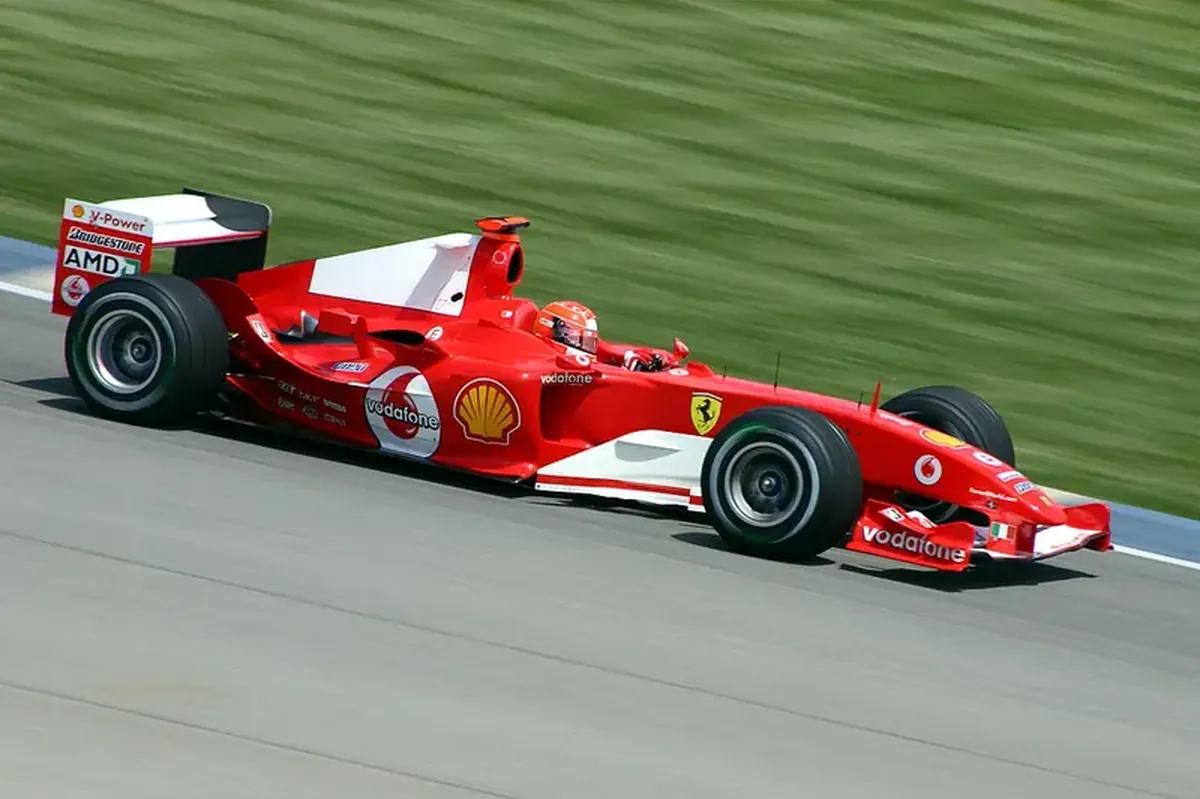
Schumacher at the 2004 U.S. Grand Prix
An Accident
However, the insufficient responsiveness of the new car did not match Schumacher’s driving style, which explains his failures in 2010. Additionally, unfavorable decisions were made against the German racer by the stewards. At the Monaco Grand Prix, all points earned in the race were stripped from him, and he received a 20-second penalty for overtaking on the last lap, while at the Hungarian Grand Prix, Schumacher was penalized for aggressive driving and lost 10 starting positions in the next race. For the first time since his return, Schumacher finished in a podium position in 2012, only climbing to third place. This solidified the racer’s decision not to continue his sporting career: at the end of the season, he planned to retire from the sport, which he announced to the press.
After concluding his brilliant racing career, Schumacher intended to dedicate himself to his family—his wife Corinna and their two children: daughter Gina-Marie, born in 1997, and son Mick (who is two years younger than his sister). However, Schumacher did not have the chance to enjoy life away from the roar of engines and stress. A horrific event divided his life into “before” and “after” the tragic date. On December 29, 2013, just five days before his 45th birthday, Michael, despite ominous premonitions, went skiing with his son and his friends at the Meribel ski resort in the French Alps. There was not enough snow, and Schumacher skied about 20 meters on an unprepared slope, flying off the track. There, he tripped over a rock, fell, and hit his head against a rock outcrop. One of his ski bindings did not release, and his helmet cracked from the impact. After interviewing witnesses and reviewing footage from the helmet camera, investigators later concluded it was an accident.
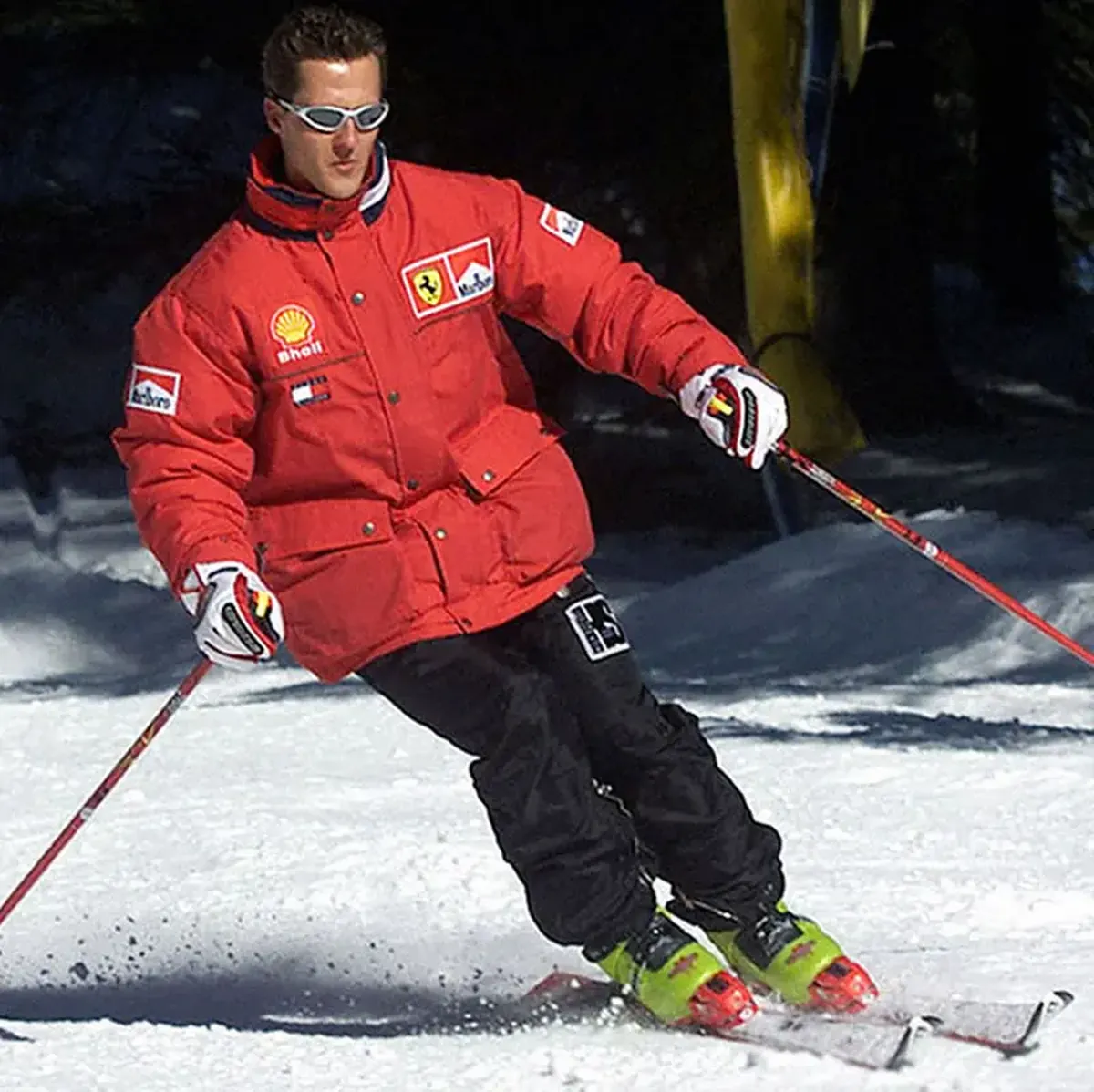
Away from the Public Eye
Schumacher was still conscious when he was placed in the helicopter, preparing to transport the athlete to the hospital. However, during the flight, his condition worsened. The transportation had to be interrupted for an emergency landing to connect the injured man to a ventilator. After inducing the critically ill patient into a medically induced coma and performing two neurosurgeries, doctors assessed Schumacher’s condition as critical. On March 7, the press was informed that the racer was still in the awakening phase, and on June 16, the former athlete’s manager announced that Michael “was no longer in a coma.” According to an official representative, the patient left the hospital in Grenoble to continue long-term rehabilitation “away from the public eye.” The name and location of the next medical facility were not disclosed.
On September 9, it became known that Schumacher had returned home for further rehabilitation (his family lives in the Swiss town of Vufflens-le-Château near Lake Geneva). Any information about Schumacher’s condition from outsiders was dismissed as unreliable. The head of the FIA medical department stated that he had not reported any news about Schumacher’s health. By the end of 2016, it became known that the family had spent 16 million euros on his treatment. Two years later, FIA President Jean Todt revealed that he visited Schumacher twice a month and wished that the situation regarding his health “were different.” In September 2021, the streaming platform Netflix released a documentary in which Schumacher’s wife and son confirmed that he was unable to move independently or communicate with those around him. It was also reported that 20 million pounds had already been spent on his treatment.
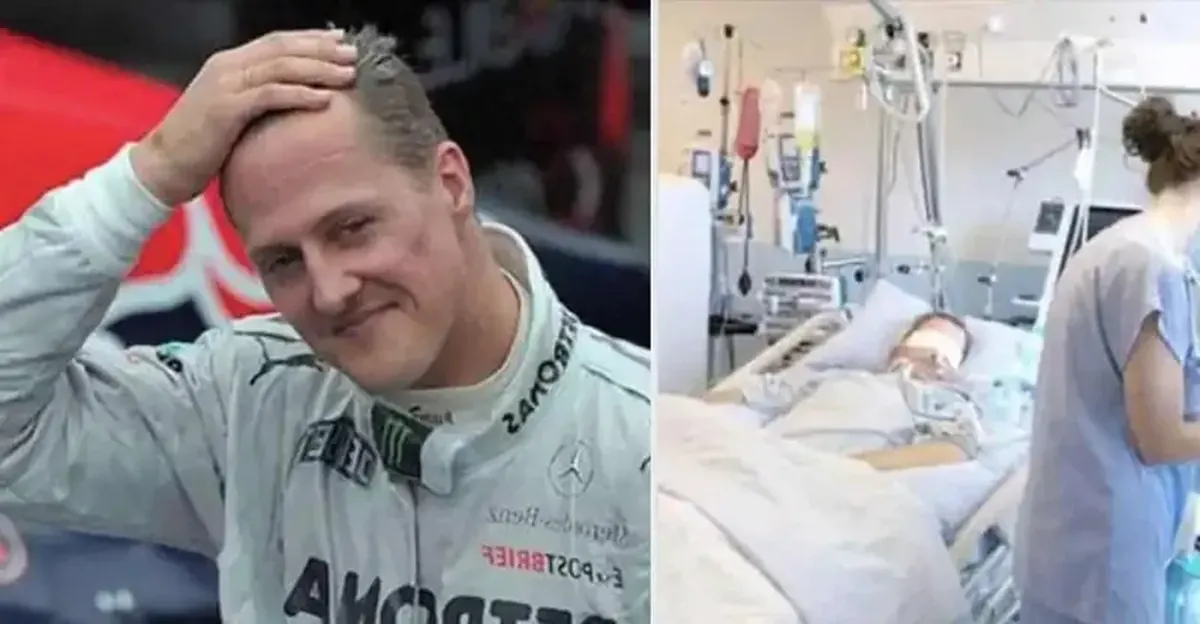
Keep Fighting
Schumacher’s son Mick, like his father and uncle (Michael’s younger brother Ralf), is also a race car driver. In rare interviews, Mick Schumacher avoids the taboo topic of his father’s condition. In the Netflix documentary, he mentioned that he would give anything to have his “former father” back, with whom he would now have a different level of understanding. Schumacher’s daughter Gina-Marie has found her passion in equestrian sports. Now 27 years old, she reportedly celebrated her wedding on September 28, 2024, at her parents’ villa in Mallorca (the former property of Real Madrid’s president was purchased by Schumacher’s wife Corinna in 2017). And then came the sensation.
According to the same tabloid, media outlets reported that Schumacher was present at his daughter’s wedding among the hundred guests who were asked to surrender their phones to prevent any recording of the event. It is hard to believe that the father of the bride was among the guests, as well as the change in tactics of his family to keep him out of the public eye. Meanwhile, the press is currently waiting for Michael to attend his son Mick’s wedding as well. Additionally, there have been rumors that Schumacher will become a grandfather in the spring. At the same time, it is known that he still requires round-the-clock medical assistance. How these facts intertwine is not so important to those seeking hope. After all, the Schumacher family founded the Keep Fighting fund in 2017 for a reason—“Keep Fighting!”
